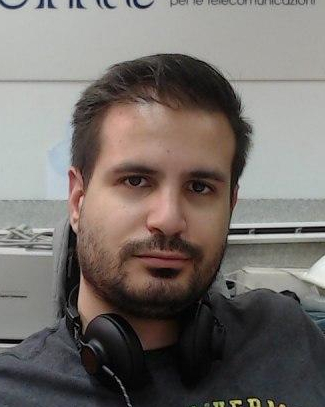
ESR 11
Daniele Medda
New Interference-Based Dynamic Channel Access Algorithms for Ultra-Dense Small Cell Deployments
LinkedIn: linkedin.com/in/dan-medda
ResearchGate: https://www.researchgate.net/profile/Daniele-Medda
Biography
I was born in Cagliari, the biggest city in Sardinia – Italy. I received my BSc. in Electrical and Electronic Engineering in 2018, and my MSc. in Internet Technologies Engineering in 2020, both at the University of Cagliari (Italy). From April 2018 to January 2021, I was a research fellow at the Multimedia and Communication Laboratory of the University of Cagliari. I am currently pursuing a Ph.D. at the International Hellenic University of Thessaloniki (Greece) as part of the TeamUp5G, focusing on the development of interference-based dynamic channel access algorithms for ultra-dense small cell deployments. Other minor research interests are signal processing, data compression and quality of experience.
I spend most of my spare time playing music, painting and watching movies.
Objectives
The current project focuses on Overlapping Basic Service Sets (OBSSs) in particular for IEEE 802.11ax deployments. The objective is to develop an algorithm that enhances spatial reuse (taking into account also fairness) in cases of ultra-dense deployments by combining simultaneously well-known techniques like the dynamic Carrier Sense Threshold (CST), the coloring scheme and the dynamic Transmit Power Control (TPC). This algorithm will consider the expected interference level at the receiver in order to further enhance spatial reuse by allowing a concurrent transmission to take place without provoking a collision when the reception level is greater than the maximum interference level that an inter-cell station concurrent transmission can cause. The new algorithm will be analyzed under various residential, enterprise and outdoor dense scenarios.
Expected Results
- Study and performance comparison of the dynamic CST, the coloring scheme and the dynamic TPC, channel access techniques that have been proposed by the IEEE 802.11ax Task Group.
- Development and performance evaluation of a new algorithm that enhances spatial reuse in ultra-dense OBSSs deployments by taking into account the receiver’s expected interference level.
- Study and optimization of the per-station performance of all considered algorithms.
- Study and improvement of fairness between legacy and IEEE 802.11ax devices that coexist in the same network and implement the new algorithm under various residential, enterprise and outdoor dense scenarios.
- Contribution on standardization to the IEEE 802.11ax Task Group.
Institutions and Supervisors
- Main Institution: International Hellenic University(IHU) URL: https://www.ihu.gr/
- PhD Enrollment: Department of Science and Technology, International Hellenic University, Greece
- Academic Supervisor: Prof. Periklis Chatzimisios (IHU) URL: https://www.tech.ihu.edu.gr/index.php/en/ihu-sst-faculty?fid=153
Secondments
To be decided
